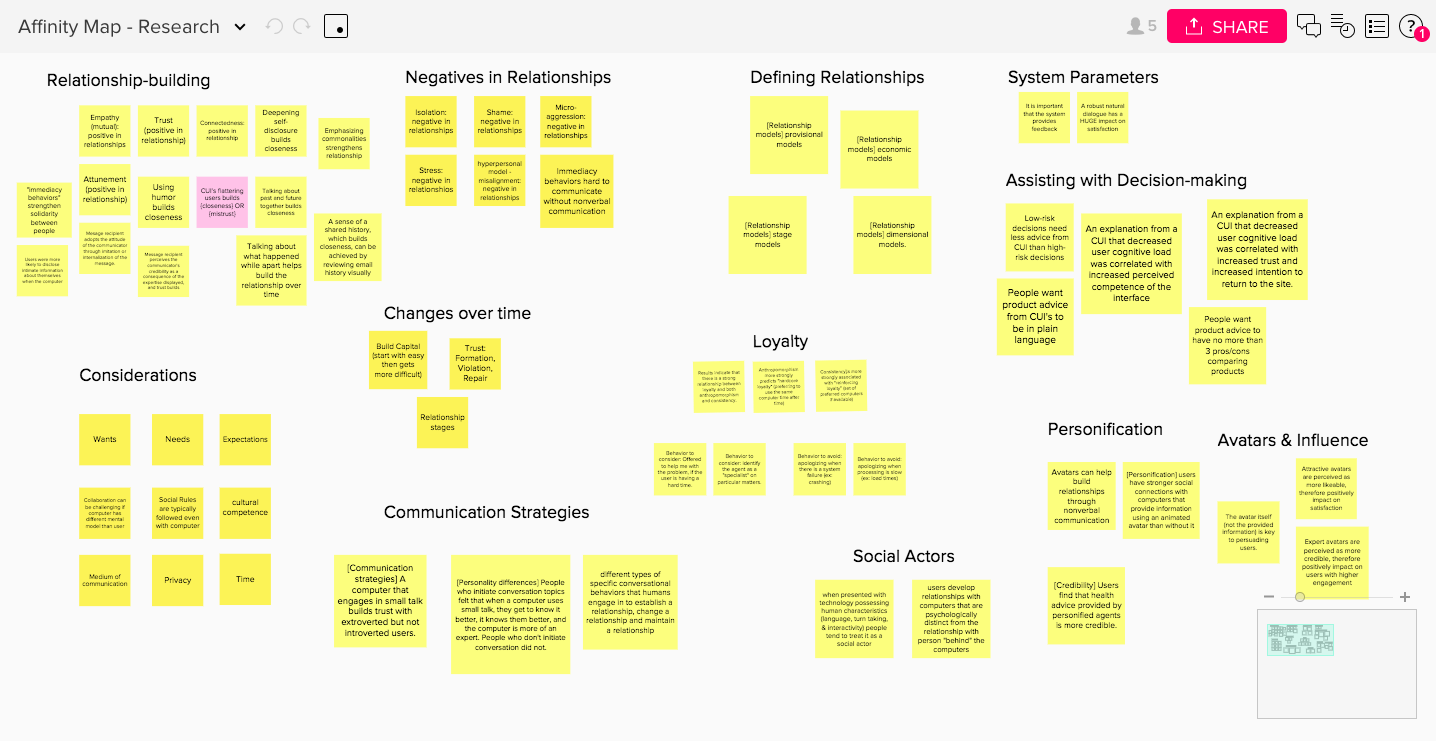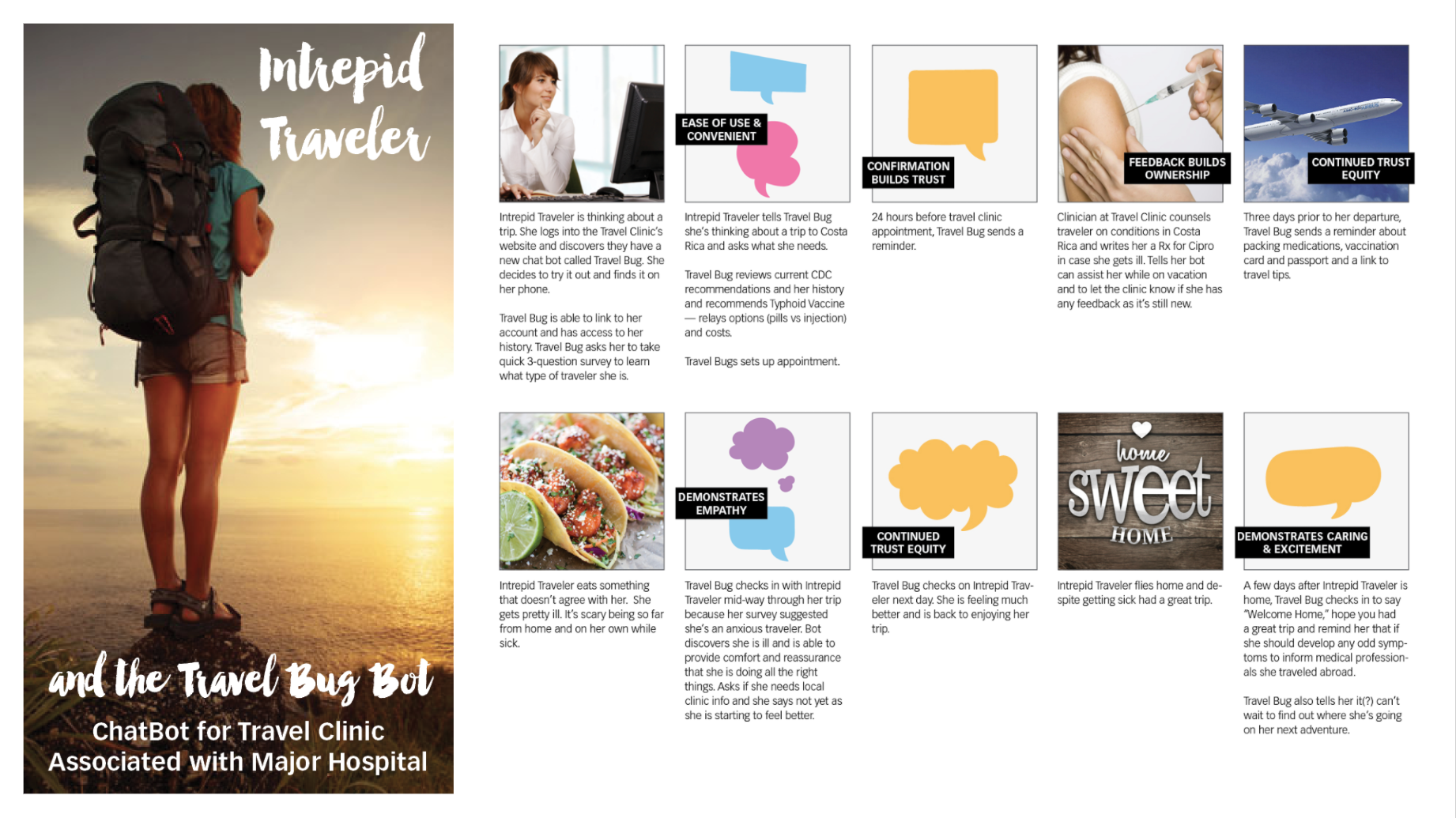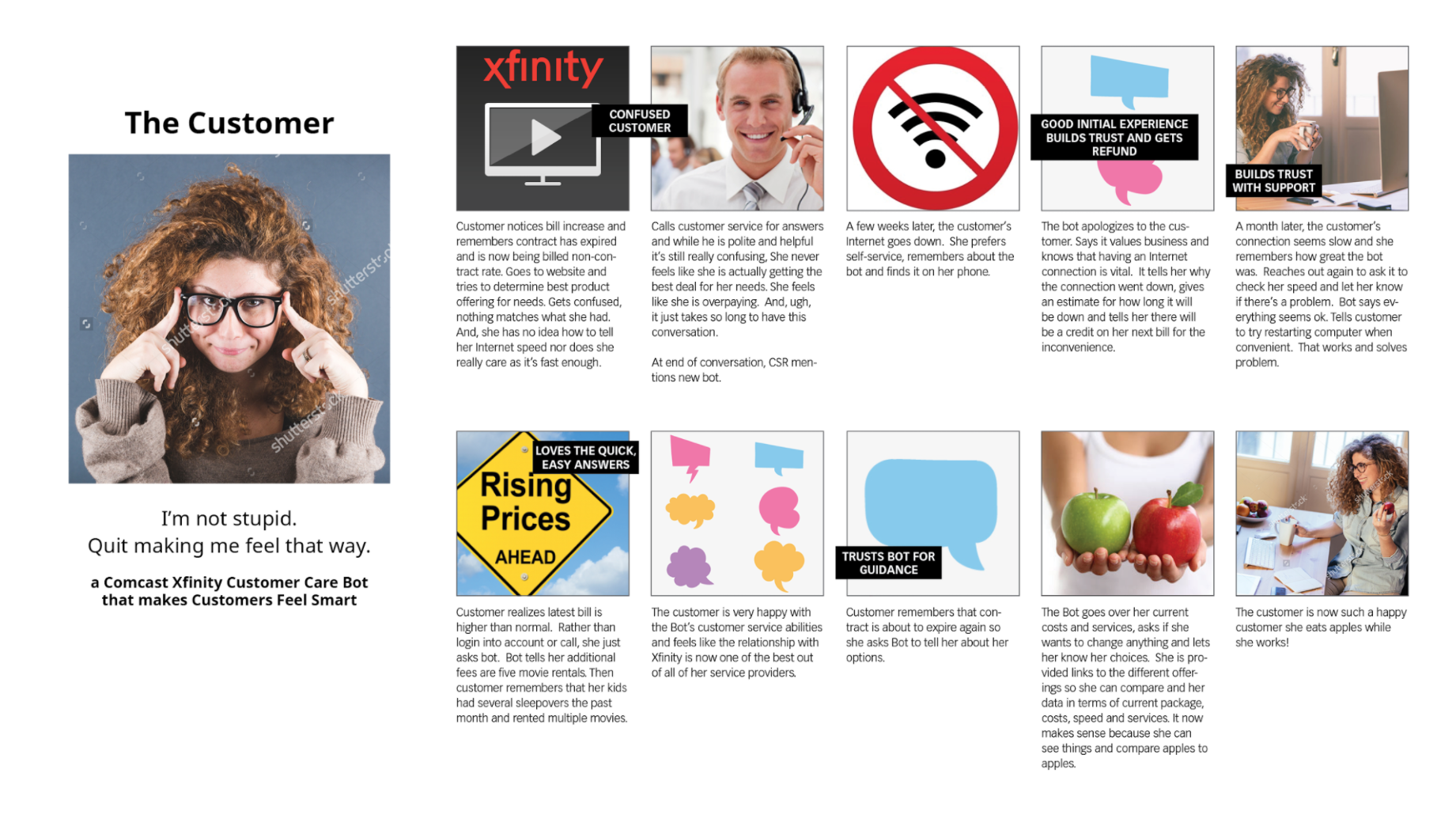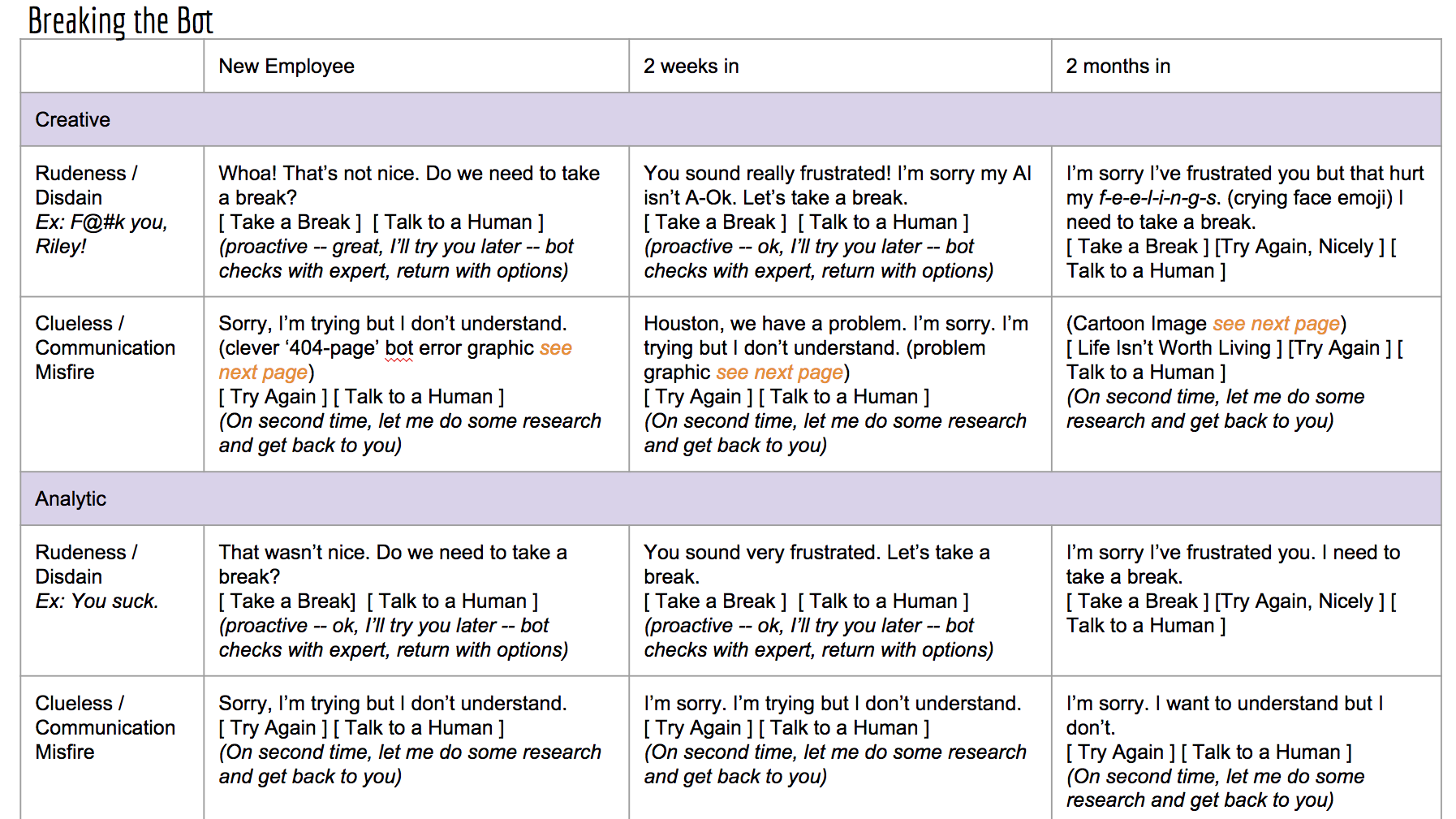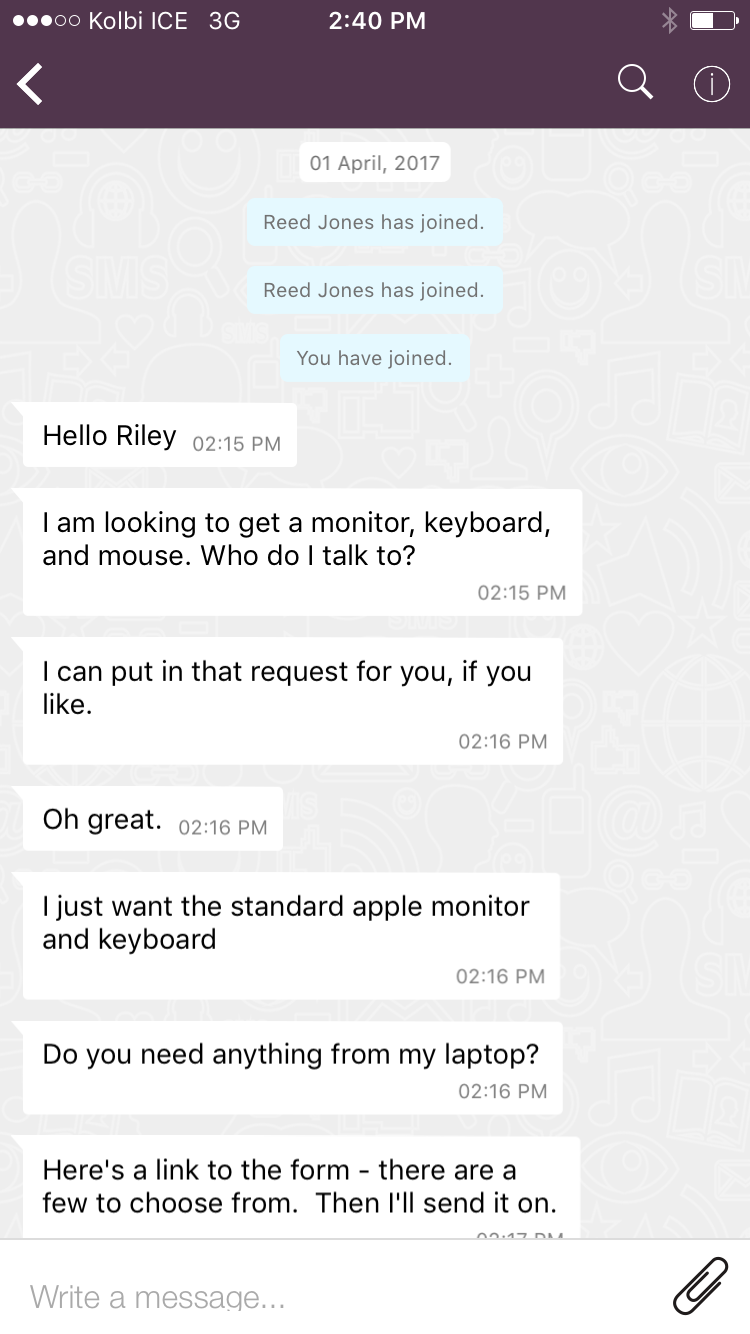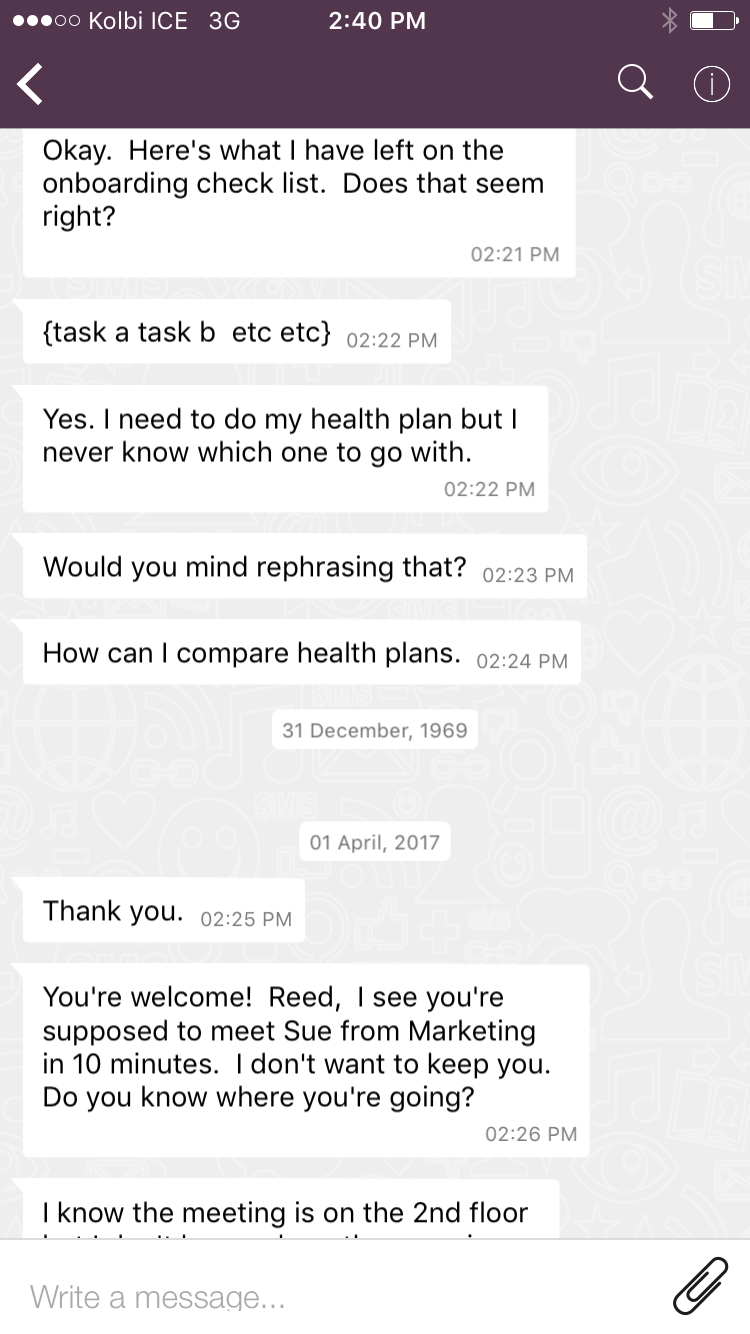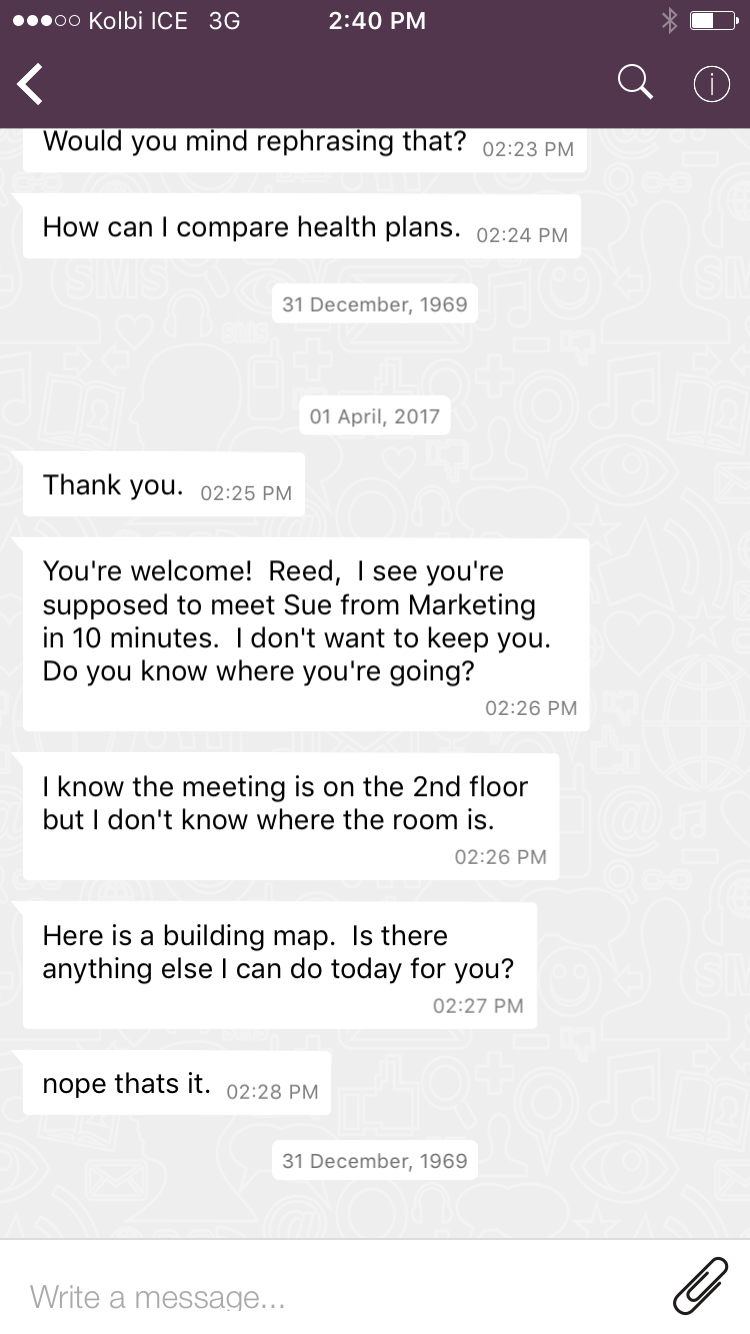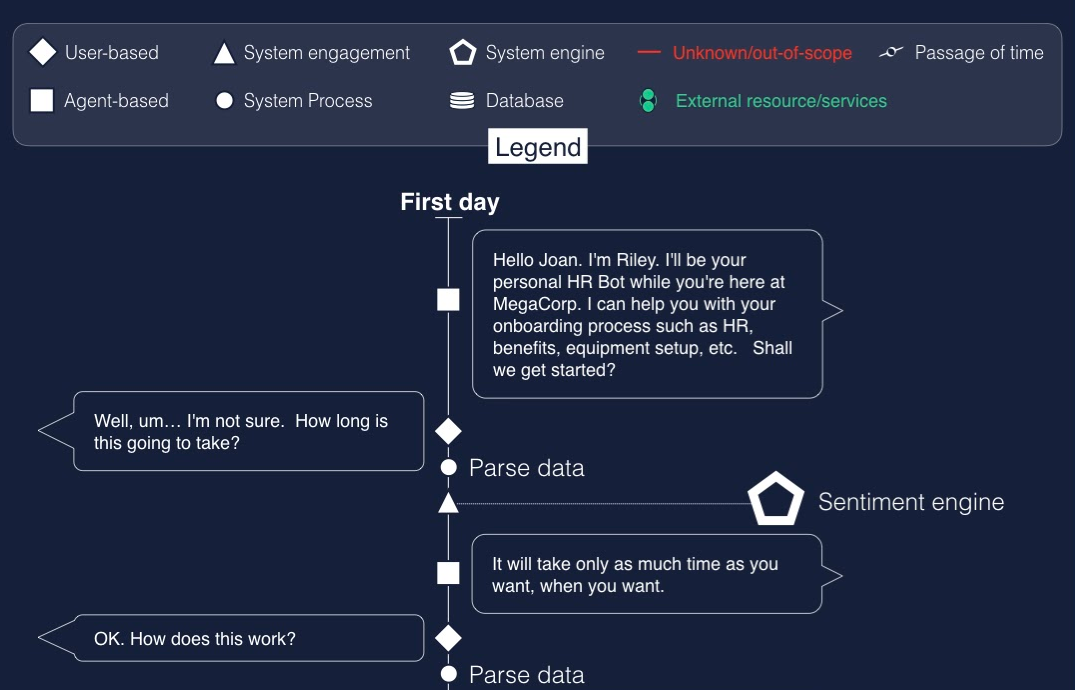Project at a Glance
A Boston-based tech company that creates collaboration tools wanted to understand under what circumstances and conditions would a human want to work with an intelligent agent. My team and I began by conducting a literature review and used affinity mapping to organize the most salient themes around relationship building research. Then we used design thinking to develop scenarios and personas. We wrote the conversational interface script and conducted Wizard of Oz Testing. Finally, we created a prototype and system architecture.

